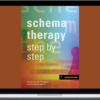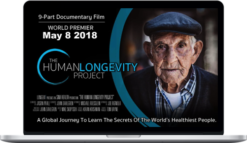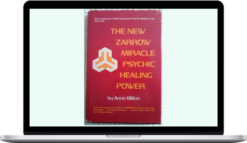NICABM – Advances In The Treatment Of Trauma
$397.00 $77.00
»Delivery: Within 24hs
Description
NICABM – Advances In The Treatment Of Trauma
Breakthrough Treatments For Trauma Are Reducing Symptoms, Shortening Treatment Time, and Helping Patients Recover Their Lives.
How to use the advances in brain functioning, somatics, vagal nerve response and attachment to get faster results with your trauma patients
What You’ll Learn In Advances In The Treatment Of Trauma
What Neuroscience Teaches Us About the Treatment of Trauma
Bessel van der Kolk, MD
Co-author of Traumatic Stress: The Effects of Overwhelming Experience on Mind, Body, and Society, Medical Director of the Trauma Center at Justice Research Institute, Faculty at Boston University Medical School
- How trauma affects the brain
- Why understanding how traumatic memories are stored is key to planning your treatment
- How trauma can destroy one’s sense of time and why this is so critical to recover
- The four components of an effective trauma treatment
- The effect of child abuse and neglect upon neurodevelopment
- Common mistakes practitioners make
- Can yoga reverse the secondary brain damage caused by trauma?
Integrating the Body in Trauma Treatment – A Sensorimotor Approach
Pat Ogden, PhD
Author of Trauma and the Body, Founder & Director of The Sensorimotor Psychotherapy Institute
- Uncovering root causes – the long-term effects of attachment issues
- How to manage the arousal and integration problems caused by trauma
- How to help your patients safely expand their window of tolerance
- Using polyvagal theory to help regulate arousal
- How mindfulness can create positive connections to the body
Polyvagal Theory: Why This Changes Everything
Stephen Porges, PhD
Author of The Polyvagal Theory, Professor at University of Illinois at Chicago
- How to use heart rate variability as a portal to self-regulation
- The key missing ingredient in the fight/flight theory
- How polyvagal theory clarifies the role of fear in unresolved trauma
- Why vagal regulation affects our interactions with others
- How music cues vagal regulation and why this could help your trauma patients
- Polyvagal theory and working with children
- How to increase psychological safety in hospital settings
Guided Imagery for Trauma Recovery (Inexpensive, Accessible, and Effective)
Belleruth Naparstek, LISW
Author of Invisible Heroes and Staying Well With Guided Imagery, Creator of the Health Journeys guided imagery audio series
- Getting the “D” out of PTSD
- Why guided imagery is especially effective with people who have been traumatized
- How to overcome treatment barriers with combat veterans
- The treatment of moral injury and why it can be essential in working with soldiers
- Common mistakes practitioners make in working with military personnel
- Using the internet to connect with survivors of tragedy
The Neurobiology of Trauma – What Is Happening in the Brain of Someone With Unresolved Trauma
Ruth Lanius, MD, PhD
Co-Editor of The Impact of Early Life Trauma on Health and Disease, Faculty at University of Western Ontario
- Four important deficits found in people with early childhood trauma
- The effect of childhood trauma on relationships – and what this means for treatment
- How trauma alters connections within the brain
- Strategies to repair the three areas of self damaged by early life trauma
- The unique benefits of using a Stage-Oriented Approach to treatment
How Trauma Affects Intimate Relationships
Sue Johnson, EdD
Author of Hold Me Tight and Emotionally Focused Couple Therapy with Trauma Survivors, Director of the International Center for Excellence in Emotionally Focused Therapy
- How to use couples therapy to strengthen attachment bonds in the face of trauma
- Unique problems (and opportunities) in couples therapy with trauma survivors and their partners
- Special considerations for first responder or military families
- How to use emotionally focused couples therapy for treating trauma
About NICABM
We proudly provide continuing education for practitioners who are dedicated to being the best in their craft. Our goal is to develop programs that connect you with the top experts and the latest strategies in the field, to help you achieve better outcomes, more quickly with each of your clients.
More courses from the same author: NICABM
Delivery Policy
When will I receive my course?
You will receive a link to download your course immediately or within 1 to 21 days. It depends on the product you buy, so please read the short description of the product carefully before making a purchase.
How is my course delivered?
We share courses through Google Drive, so once your order is complete, you'll receive an invitation to view the course in your email.
To avoid any delay in delivery, please provide a Google mail and enter your email address correctly in the Checkout Page.
In case you submit a wrong email address, please contact us to resend the course to the correct email.
How do I check status of my order?
Please log in to HealingCourse account then go to Order Page. You will find all your orders includes number, date, status and total price.
If the status is Processing: Your course is being uploaded. Please be patient and wait for us to complete your order. If your order has multiple courses and one of them has not been updated with the download link, the status of the order is also Processing.
If the status is Completed: Your course is ready for immediate download. Click "VIEW" to view details and download the course.
Where can I find my course?
Once your order is complete, a link to download the course will automatically be sent to your email.
You can also get the download link by logging into your HealingCourse account then going to Downloads Page.
Related products
Total sold: 3
Total sold: 3
Total sold: 3










